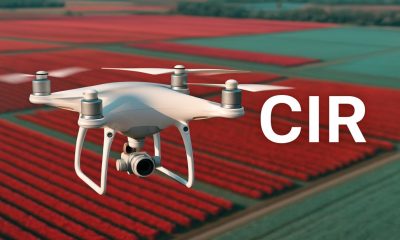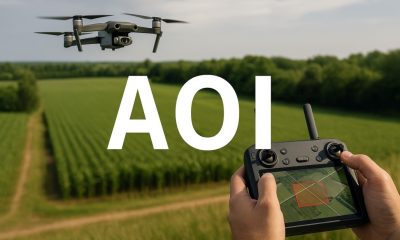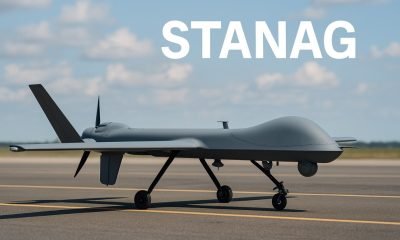- Acronym Guide
- AAM
- ABS
- AC
- ACAS
- ADS-B
- AFAC
- AGL
- AI
- AIM
- ALS
- AM
- AMA
- ANSP
- AOI
- APPI
- AUV
- AUVSI
- ARPAS-UK
- ASTM
- ATC
- BVLOS
- CAA
- CAAC
- CAB
- CASA
- CATT
- CBO
- CBR
- CBRN
- CDMA
- CDR
- CFR
- CIR
- COA
- COMINT
- CORS
- COTP
- COTR
- CPTED
- CV
- C2
- DAA
- DEM
- DFI
- DFS
- DGCA
- DHS
- DOD
- DPA
- DPEs
- DRG
- DRO
- DSM
- DSMX
- DSP
- DSSS
- DTM
- EASA
- EFT
- EO
- EOD
- EO/IR
- ELINT
- EMI
- ESC
- EVLOS
- eVTOLs
- FAA
- FCC
- FCS
- FHSS
- FICCI
- FLIR
- FOB
- FOV
- FPS
- FPV
- GBDAA
- GCP
- GCS
- GDPR
- GML
- GNSS
- GPS
- GSD
- GVC
- HDR
- HOGE
- IACRA
- ICAO
- ICS
- IMU
- INS
- IR
- ISA
- ISR
- ITU
- JARUS
- LAAMS
- LAANC
- LAATM
- LAI
- LBA
- LIDAR
- LOS
- LSALT
- MAC
- MAVLink
- MLIT
- MMS
- MSL
- MTOM
- NDAA
- NCSL
- NFZ
- NIST
- NMEA
- NOTAM
- NPA
- NPRM
- NTIA
- OBIA
- OEM
- OFDM
- OOP
- PASM
- PAV
- PCV
- PdM
- PEC
- PIC
- PID
- PIPL
- PLD
- PM
- PN
- PPK
- PPS
- PSM
- PWM
- UAM
- UAOP
- UAS
- UASTM
- UAV
- UCAVs
- UHD
- UHF
- USV
- UTM
- RAIM
- RCC
- RCS
- RFI
- ReOC
- RePL
- RMS
- ROI
- RPAS
- RPC
- RTH
- RTK
- SaR
- SAR
- SARP
- SBAS
- S.Bus
- SBIR
- SEDENA
- SfM
- SFOC
- SIGINT
- SLAM
- SMS
- SORA
- STANAG
- STTR
- sUAS
- TCAS
- TCCA
- TFR
- TIN
- TOF
- TP
- TPS
- TSA
- VHF
- VLOS
- VTOL
Drone Acronyms
What is PAV (Personal Aerial Vehicle) & How Does it Work?
Published
1 month agoon
By
Jacob StonerTable Of Contents

Definition
A Personal Aerial Vehicle (PAV) is a compact, human-carrying aircraft—typically autonomous or semi-autonomous—designed for personal transportation through urban or regional airspace. These vehicles are often electric vertical takeoff and landing (eVTOL) aircraft and represent a key vision of future air mobility. In drone-related contexts, PAVs blur the line between UAVs and crewed aircraft and will require advanced monitoring systems for traffic management, safety, and compliance.
Usage
PAVs are in the development and testing phase across multiple aerospace companies and research programs. They are envisioned for use in air taxi services, urban commuting, and emergency response. As they become more autonomous, PAVs will rely on drone-like monitoring systems—such as UTM integration, detect-and-avoid technologies, and real-time telemetry transmission—for safe navigation in low-altitude airspace.
Relevance to the Industry
As the drone industry evolves into the broader category of Advanced Air Mobility (AAM), the overlap between large drones and PAVs becomes more significant. Many airspace monitoring, sensor fusion, Remote ID, and BVLOS protocols developed for drones will directly support PAV integration. Additionally, drone traffic management platforms are being scaled to accommodate both unmanned and crewed personal aerial systems operating in urban air corridors.
How Does PAV (Personal Aerial Vehicle) Work?
A Personal Aerial Vehicle (PAV) operates using advanced autonomous flight systems, real-time data monitoring, and integrated airspace communication. While similar in many ways to drones, PAVs are designed to carry people safely through low-altitude air corridors, often in congested urban environments. Here’s a breakdown of how they function:
Autonomous Flight Systems
PAVs are typically designed with full or semi-autonomous control systems. These systems manage takeoff, cruising, obstacle avoidance, and landing. Onboard software uses GPS, inertial measurement units (IMUs), and visual or LiDAR-based navigation to ensure precise positioning. For passenger safety, redundancy is built into flight control, propulsion, and communication systems.
Pre-Flight Planning and Airspace Authorization
Before a PAV flight begins, operators or automated systems plan a flight path that accounts for airspace restrictions, weather conditions, and UTM traffic data. The flight plan is submitted to the relevant airspace management platform for authorization—just as commercial drones do today. In future implementations, this process will be fully automated.
UTM Integration and Real-Time Monitoring
While in flight, the PAV continuously transmits data—such as position, altitude, speed, and system health—to a Unmanned Aircraft System Traffic Management (UTM) network. This allows regulatory bodies and service providers to monitor traffic flow and detect potential conflicts. In congested airspace, the UTM system may issue updated flight paths or altitude adjustments to maintain safe separation between vehicles.
Detect-and-Avoid Technologies
PAVs rely on onboard sensors—such as radar, ultrasonic, and optical systems—to detect other airspace users, buildings, birds, or other obstacles. When a potential conflict is identified, the system autonomously calculates and executes an avoidance maneuver. These same sensors also assist in safe takeoff and landing, especially in unstructured environments like rooftops or parking areas.
Power and Propulsion
Most PAVs are electric vertical takeoff and landing (eVTOL) aircraft. Their electric motors drive multiple rotors or ducted fans, providing vertical lift and forward thrust. Battery management systems track energy usage, remaining flight time, and thermal conditions to ensure safe operation. Backup power systems are often included to support emergency landings if needed.
Passenger Interface and Safety Features
Passengers may interact with the vehicle through a touchscreen or voice command system, choosing destinations and reviewing route details. PAVs also include failsafe features such as parachute systems, emergency hover-and-hold protocols, and return-to-base logic in case of system failure.
Through the combined use of UAV-inspired autonomy, traffic management networks, and safety redundancies, Personal Aerial Vehicles offer a glimpse into the future of monitored, on-demand air travel—powered by drone-derived innovation.
Example in Use
“During its first live test in a city environment, the autonomous Personal Aerial Vehicle (PAV) relied on a modified UTM system designed for drone monitoring to avoid obstacles and transmit telemetry in real time.”
Frequently Asked Questions about PAV (Personal Aerial Vehicle)
What is the difference between a PAV and a drone?
A PAV is designed to carry one or more passengers, while drones are typically uncrewed. However, both may use similar sensors, autonomous systems, and traffic management infrastructure.
Are PAVs legal to operate today?
PAVs are currently in experimental stages in most countries. Aviation authorities like the FAA and EASA are working on certification frameworks, airworthiness standards, and airspace integration policies to allow future deployment.
How are PAVs monitored during flight?
Similar to drones, PAVs will transmit real-time telemetry, Remote ID, and flight data to centralized UTM networks. These systems help manage airspace access, prevent collisions, and ensure compliance with flight restrictions.
For examples of these acronyms visit our Industries page.
As the CEO of Flyeye.io, Jacob Stoner spearheads the company's operations with his extensive expertise in the drone industry. He is a licensed commercial drone operator in Canada, where he frequently conducts drone inspections. Jacob is a highly respected figure within his local drone community, where he indulges his passion for videography during his leisure time. Above all, Jacob's keen interest lies in the potential societal impact of drone technology advancements.











